Reflection photography is a challenging, special type of photography that requires a decent comprehension of the perspective, angles and of course an artistic eye and flair.
Reflections can be hard to capture because they involve you looking at your perspective differently, or in a less traditional sense than you normally would.

Instead of photographing a traditional scene, why not mix it up a little? You have to start by changing your perspective – take your shots upside down. You want your viewer to look at the world from a new viewpoint.
It will take time and consideration to get the perfect shots, but the end results can be extremely rewarding. Though reflection photographs can be used to add depth and interest; they can also act as a frame, for capturing an image within an image – pretty clever, and artistically original all at the same time.
From reflections of trees in lakes, to shots of new buildings with their surroundings reflected within them, there are plenty of ways a photographer can shoot and use reflections to their advantage.

How many times have you passed a great big puddle in the street and tried to avoid it? This image below is an example of how simple and effective this can work as a reflective image when done correctly.
Within’ reflection photographs are great for creating atmosphere and moods within your images. Using wet, damp puddles, with the right composition and filter can be quite emotive.

If you are a fan of architectural photography, then this one is for you. Often glass or reflective surface buildings are found in cities or industrial areas. Get out into the city and take full advantage of these surfaces for your reflection photographs.
Seeing double? Mirrors are a great way of adding depth and dimension to your images but take caution – using a flash against a mirror will create glare from the surface. Also, be careful you don’t catch yourself in the mirror whilst taking the shot – this could distract from the overall effect and end result.
Reflections can also be a way of creating interesting ghosting effects; they can create a sense of hustle and bustle within an image.
Let’s not forget, the mother of all things… landscapes! When done right, landscapes can create a symmetrical artistic shot. It’s like two for the price of one. For example:
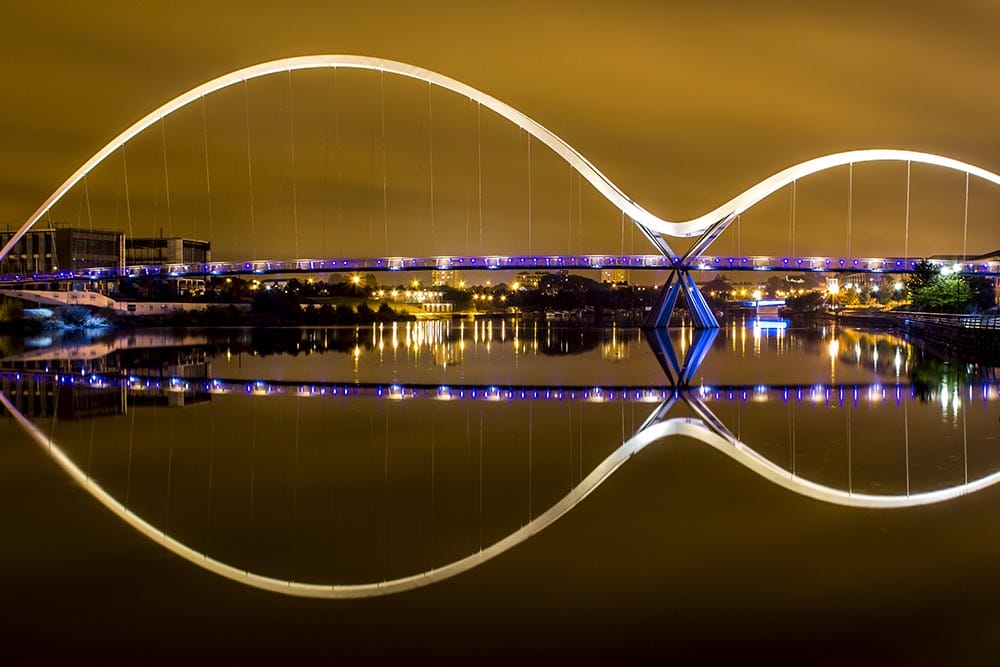
Back to the city, water is always your first point of call when you think reflections. Have you ever stopped to appreciate how beautiful the effects of lights can be on water? Just like a water watercolour painting.
Who says you have to include a full symmetrical image? Why not focus in on the reflective surface itself? It’s a great way of adding a modern edge and abstract style to your shots.
Focusing on a reflection of a person or figure creates a sense of mystery – the person almost looks ghost (or shadow).
Firstly, if you want to shoot mirror-like reflections you need to head out on a very, and I mean very, still day. It is essential if it is sunny or cloudy, but you do need to ensure there is as little wind as possible blowing.
Watching the weather and doing your research beforehand will stand you in good stead. Start by finding ponds or lakes that are sheltered by hills or trees. This will also help you out if you have the unfortunate luck of an unexpected windy day.
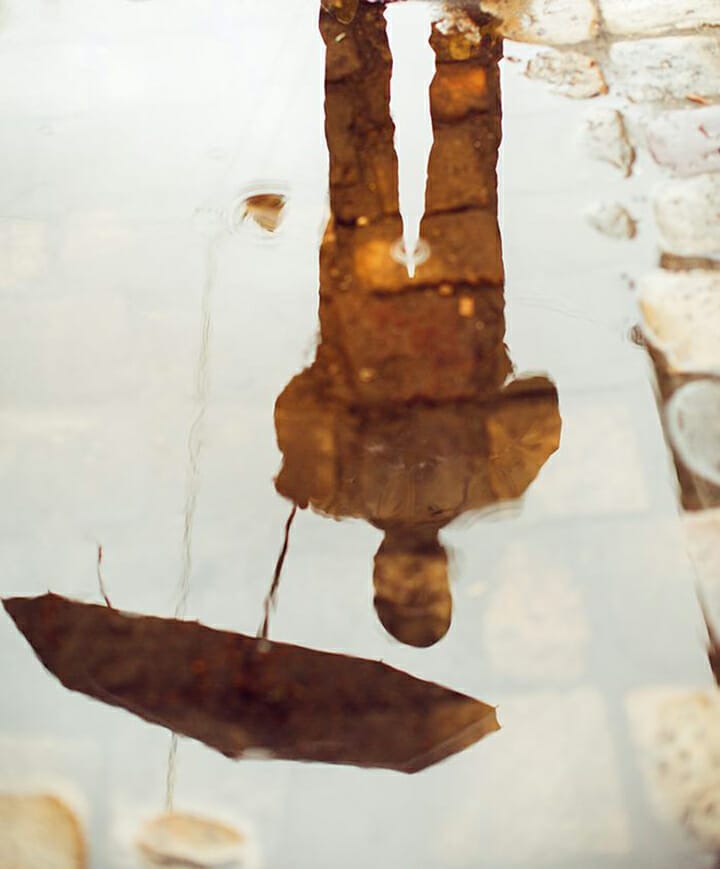
Secondly, as always, you will want to head out to your chosen location beforehand. Take a walk around the location of choice, and consider different sights, angles, hazards and lighting. It’s also worth checking the direction the wind is blowing from.
By doing so, you may find parts of the pond or lake that are still and sheltered. You may also notice other parts that are very rippled.
Set your alarm clock to go off early as winds are usually lighter in the morning. However, if you are aiming for more abstract effect you don’t need to sit in twiddling your thumbs waiting for the wind to die down – the wind will accentuate the ripples and add to the effect.
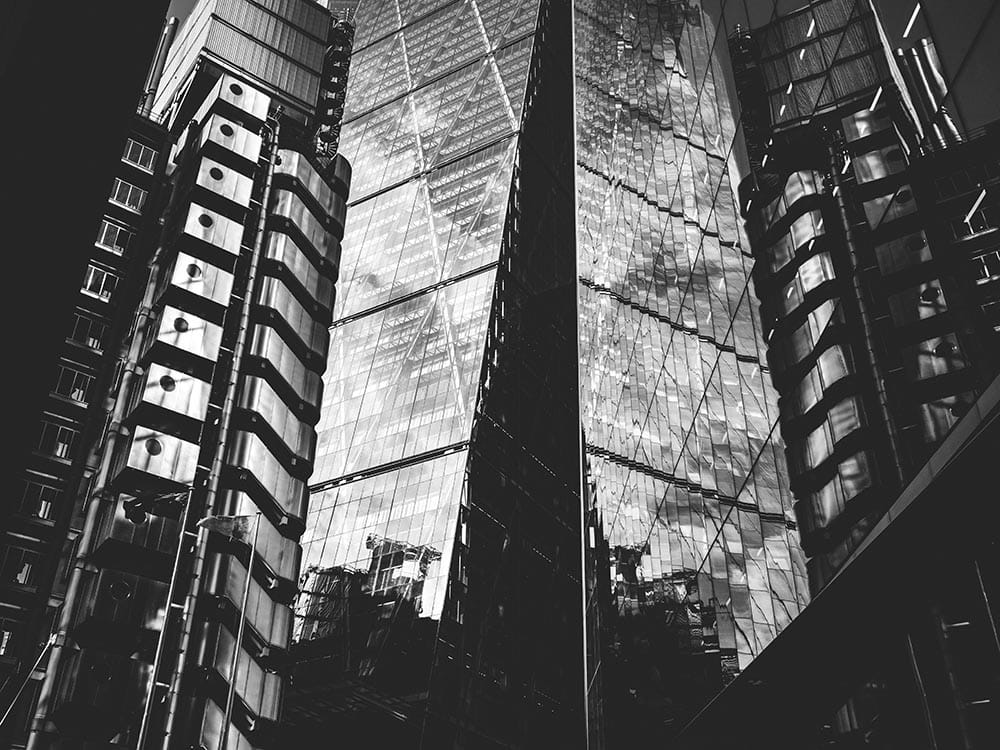
Furthermore, by placing water in the foreground of the shot it will lighten the image. This is useful when you have a bright sky and need to add some oomph to the foreground of your shot.
If you find the sky’s a little too bright, you can always consider investing in an ND (Neutral Density) filter; this will bring a little balance to the shot.
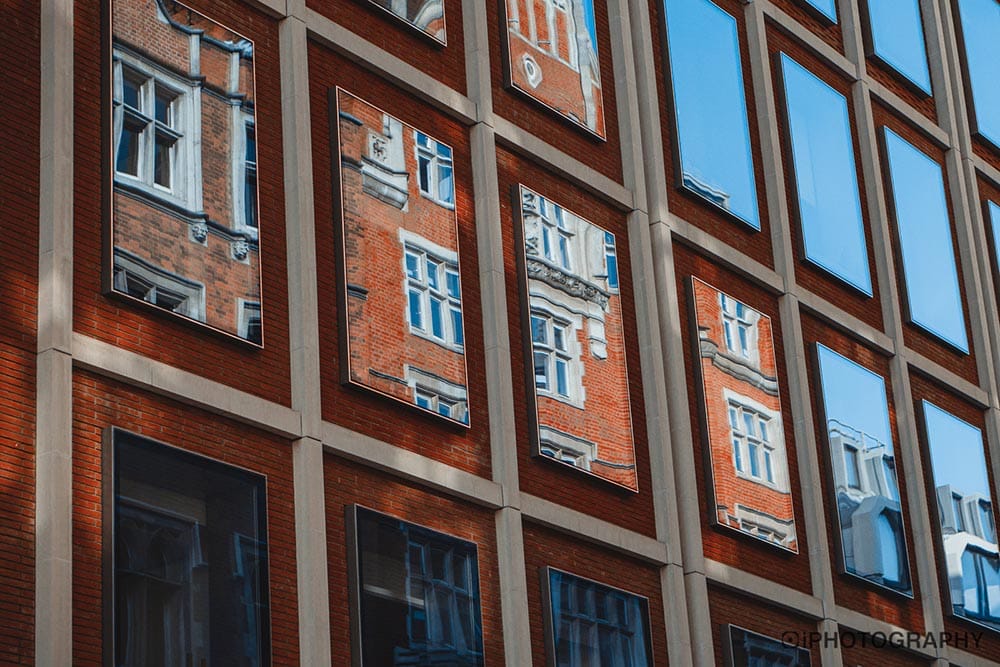
Even on still days you may still get slight movement on the water’s surface. You can help to smooth and resolve this by using a longer shutter speed. If you use post-production software, you may want to take one shot with a fast shutter speed and one with a longer shutter speed – so that you can combine the 2 images together.
Don’t rule out shoots on windy days, you can still spend a few hours shooting distorted ripple reflections; take advantage of the movement and shapes you see. All you need to do is find something interesting (colourful too if you can) that can be reflected in the water – you’ll end up with a unique collection of abstract, dreamlike shots.
As stated before, why not make use of the array of puddles you find dotted around the streets. In fact, you don’t always need a puddle! A damp pavement in the evening can work very effectively.
Look out for the reflections of neon lights and signs – with a little imagination and observation, you can create some striking and exciting shots. If you’re focusing on a puddle, why not consider capturing a wide-angle shot? Use your aperture to throw the surroundings out of focus; this can help to add depth and context to your image.
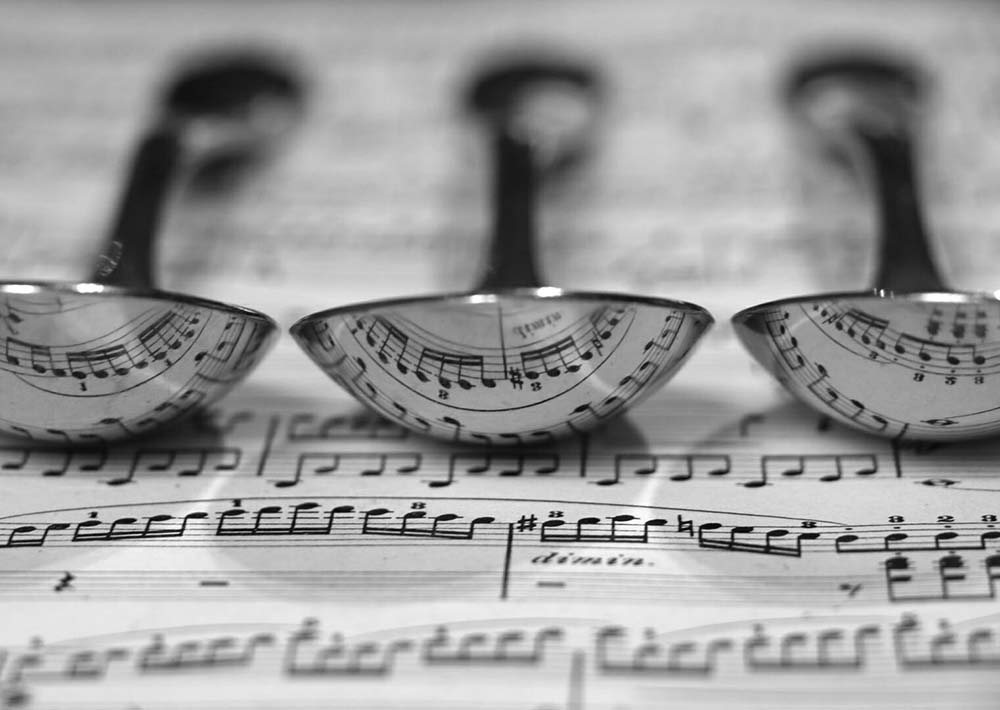
Finally, many modern materials, such as steel and glass, offer great surfaces to shoot reflections from. As seen in the examples in this article these shots make both powerful and effective reflection photography.
However, bear in mind that you may need to boost the contrast of your images using your post-production software. This is because the reflections are often darker than the subject that’s being reflected.
Discover the BEST way on how to clean a camera sensor using swaps, rocket blowers and pencil brushes to give your shots a dust-free finish!
Capture the magic of the night with our beginner’s guide to night photography. Learn tips and techniques for stunning results.
Master the art of solar eclipse photography with expert tips on equipment, settings, and precautions for stunning celestial images.
Learn the basics of photography – fast – with our FREE 60-Second Photographer online course. Each class is short and sharp with simple, actionable steps that give you immediate results.
x 30 lessons

© iPhotography™
Become a confident and competent photographer in less than 30 minutes!
Before you leave, make sure you’ve secured your FREE online photography course (worth £29.99)
Each class is just 60-seconds or less making it the fastest and easiest way to learn photography!